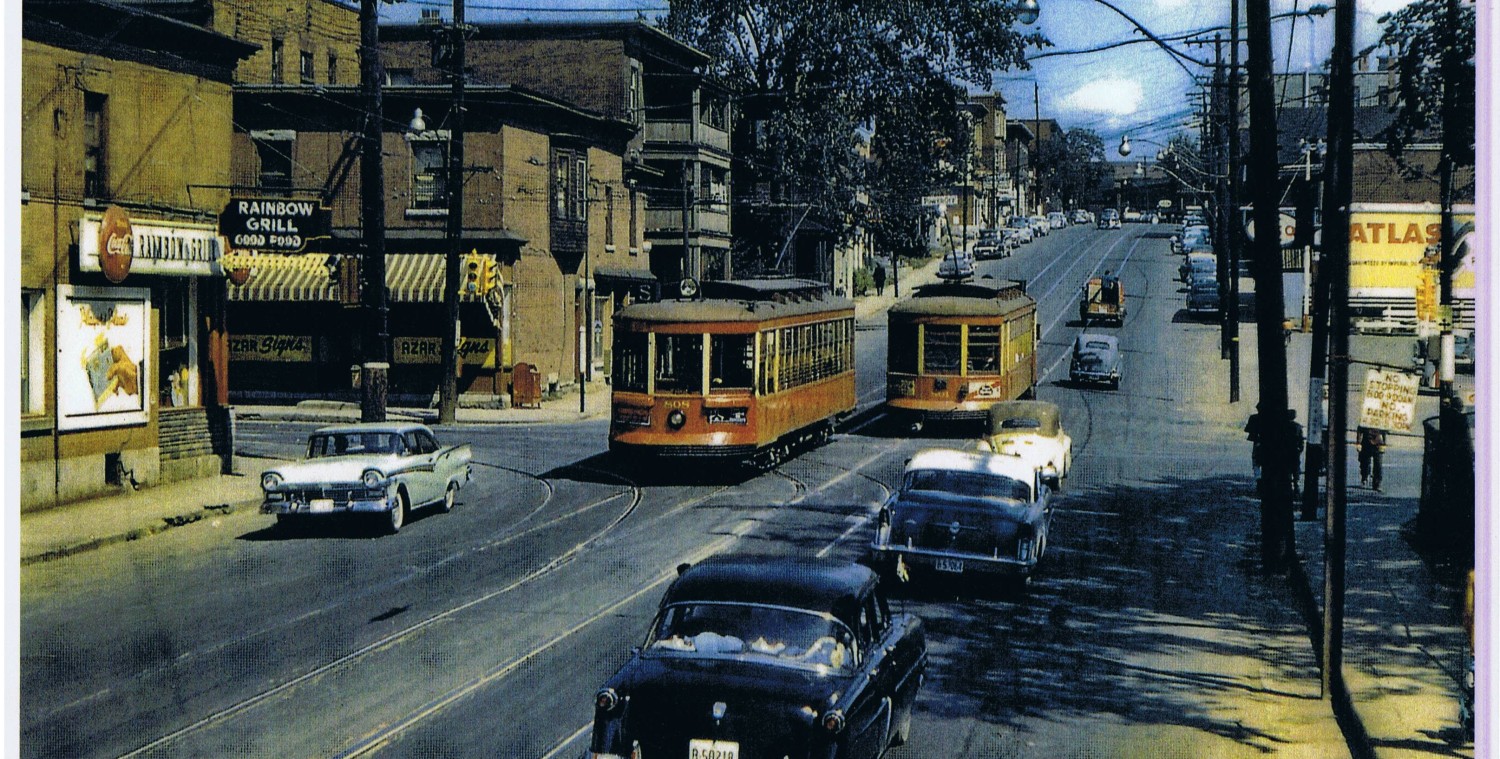The City continues to devote enormous sums of money every year to providing free parking spaces for motorists to store their cars. Public rights of way are a limited commodity, yet the City insists that the highest and best use for these rights of way is not for street trees, wide sidewalks, or other “people” and environment benefits.
The above photo is taken on Lisgar, looking west. The intersection in the distance is Bay Street. Note that all the parking spaces in the foreground are empty, at 10am on a weekday morning. The City charges for parking here, as it is an easy stroll to downtown offices. Across Bay Street, every space is taken by a car, and the City charges nothing for long-term on-street parking.
There are several observations possible: people will walk further to get to free parking; the City’s zone for charging for on-street parking is too small (I’d make it EVERYWHERE, 24/7); the City undermines its own policies and goals by enabling and subsidizing private motor car driving by providing free car storage to drivers at taxpayer expense; the parking rates are too low west of Bay; we could have really nice pleasant downtown residential areas if we rolled up some of the asphalt.




Eric, the city does not provide free car storage. The city provides free parking for a limited time in some places (Generally, 1 hour downtown, 3 hours other places). If you actually want to store your car on the street, it’s around $57/month, which isn’t much cheaper than a private lot charges in some places.
That deal is only if you can prove you live in the district, if you just want a place to park your car for the day while you’re at work, you’re stuck paying a private lot the going rate. In some lots downtown it’s $200/mo.
Even if you did have your little pipe dream, and put meters up all over downtown, you suddenly have to pay for more bylaw officers to enforce the meters, which means that empty spots are suddenly costing you money, and that money making scheme you’ve concocted suddenly looks like a money loser.
So even the premise of your post is wrong, but even if it were right, there are many other reasons why having cars parked along the edge of a busy road is a good idea.
I’ve lived in cities where the streets were narrower, and there was no free parking. In general, it made things more hostile to pedestrians, and drivers, everyone really. On a lot of the streets downtown, what makes people feel safe is not that little kerb, but the row of solid parked cars between them and the cars whizzing past.
In fact, one of the best methods of segregating a bike lane is to have the bike lane in between the parked cars and the sidewalk. People naturally feel safer with a good 4 – 6 feet of metal between them and traffic.
Matt – it is three hours at a time, sometimes. Where I live that is 9 – 7, three hour limit, 7 – 9 unlimited. So in theory, you can park your car from 4PM until Noon the next day.
But, where I disagree with you is that we have a stated policy that car parking is an important social good, so important that we are willing to devote 8 or 16 foot widths of road on most roads in the city, unquestioningly.
Take a look at Bank Street in the Glebe – teh sidewalks are absolutely tiny, so small that four people cannot walk abreast (meaning that you cannot have people going two by two) and then there are power poles, parking metres, signboards, bikes locked up etc etc. It is hostile to pedestrians in one of the most pedestrian friendly neighbourhoods in Ottawa (walkscore of around 90). Yet nobody questions this and says – why not make it one lane of parking and have nice wide sidewalks, maybe a few trees etc. I think our commitment to parking is so ingrained that we cannot see any alternative.
I agree that it is very strange that the city feels it appropriate to provide free car storage. The way that the city and most of the inhabitants treat walking and bicycling space is shameful. Expanding the zone of “pay to park” would be a good start but the ultimate solution requires more creative thinking to get people to finally realize how the car is not the solution but the problem. The bus strike showed me that I can walk across town if I have to, but parts of that walk are dangerous and really not worth doing. If I was a cyclist, I would have the same thoughts, I’m sure.
Cars parking is not really the problem. Cars driving is the problem. If you want wider sidewalks, lobby for wider sidewalks. I have a car, and I need a place to put it, and I pay the city for that privilege. But saying that parking is a problem distracts from the real problem. It’s a matter of giving more priority to walking and cycling and living, and giving less to driving around in a big metal box.
Parking is the solution Matt Rose. There are countless policy cases demonstrating that restricting and charging for parking is the single most effect lever available to municipalities to reduce driving.
While the commenters above are technically correct, enforcement becomes the issue. The corner of Byron and Clarendon in West Wellington has been a convenient, free park and ride area for several years when the 16 used to run on Byron but now folks don’t mind the extra walk to Wellington in exchange for free parking. Residents have complained regularly as parking is available on both sides reducing the road to 1 lane even though it is a school and school bus access point.